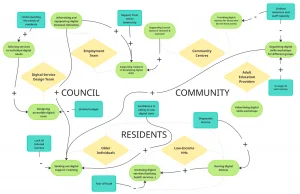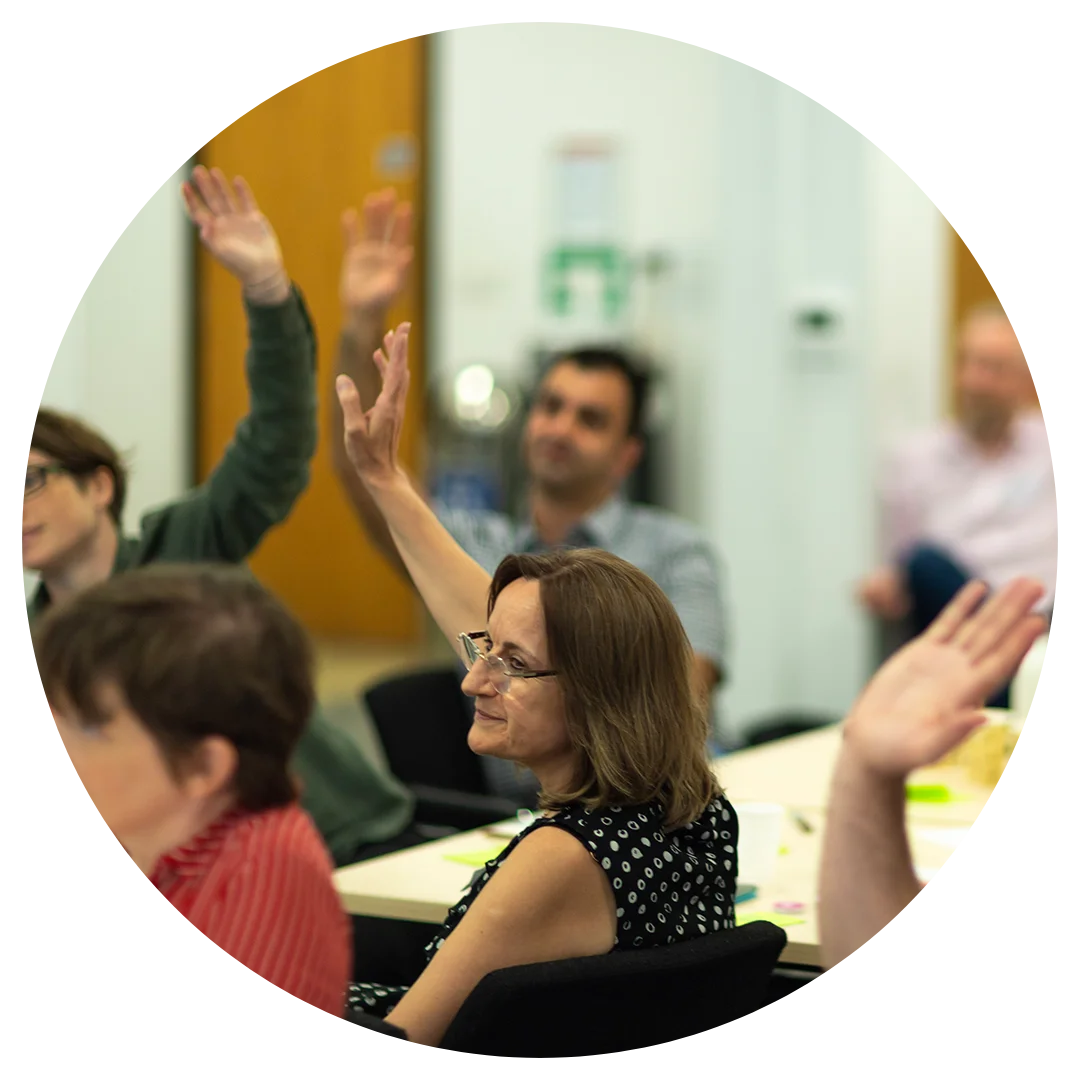How behavioural systems mapping can help design smarter & fairer interventions
As technology and innovation advance at a rapid pace, digital tools are becoming ever more central to how we live, how we work, and how we access services – yet many people remain excluded from the digital world and the opportunities it offers. For local authorities across London, this presents a key challenge: how can we reshape existing structures so that communities across the city, regardless of circumstance, can take part?
Traditionally, behavioural science has tried to tackle challenges like digital inclusion by focusing on individuals; assuming that the core problem lies in a lack of awareness, skills, or motivation. While useful in some cases, this approach often fails to consider the broader context that shapes behaviour: affordability barriers, fragmented service delivery, or misaligned policy incentives.
To truly effect change, we need to look beyond individual ‘deficits’ and instead explore the systems that sustain or prevent equitable and universal inclusion. This is where Behavioural Systems Mapping comes in: a participatory method that recognises systemic barriers and structural inequalities, and advocates for solutions that look at the bigger picture.
From Individual Deficits to System Insights
Behavioural Systems Mapping is an approach that enables us to understand individual motivations as well as the context in which behaviour happens. It asks: What structural barriers are in the way? How do policies, service design, and local infrastructure shape choices? And, within the system, who has the power to bring about change?
As the name implies, the approach produces a visual map of the many factors influencing individual behaviour: in the context of digital inclusion, these can range from “digital first” services to prohibitively expensive digital tariffs. By shifting the focus from individual decision-making to the complex system around it, Behavioural Systems Mapping shines a light on hidden leverage points such as policy gaps or complicated services – revealing deeper, systemic causes that can be targeted for more sustainable and equitable solutions, without losing sight of individual, behavioural factors.
Unlocking Smarter Interventions for Digital Inclusion
For London boroughs and their community partners, Behavioural Systems Mapping offers a practical way to navigate the complexity of digital inclusion initiatives. It brings together teams working across digital service design, community and participation, adult social care, public health, and employment, and connects them to other important stakeholders to examine how individual and joint efforts intersect with and influence outcomes for residents.
In short, a systems map helps make sense of interconnected behaviours and reveals leverage points: places where targeted action can incite a wider, systemic change. In a context of tight budgets and growing demand, it’s a useful tool for designing interventions that are not only effective but also efficient; minimising costly trial-and-error and ensuring limited resources are directed where they’ll have the greatest impact.

An example of what a Digital Inclusion map could look like
Grounded in Practice: Lessons from Greenwich
At DG:Cities, we recently worked with the Royal Borough of Greenwich’s Digital Inclusion team to design a Behavioural Systems Map focused on a local estate, where digital access is both essential and unevenly distributed. The aim was to build a clearer picture of the barriers and enablers residents face, and identify how different council teams and other local actors such as the NHS, local employers, and educational facilities interact with these barriers and enablers.
The process wasn’t without its challenges: Behavioural Systems Mapping is a powerful tool, but it can easily become unwieldy and difficult to act on. To help other local authorities make the most of this approach, we have distilled our experience into a set of practical tips:
- Start with a Clear Focus of Inquiry
Begin by identifying which aspect(s) of the system you want to better understand – such as digital confidence, device ownership, or service engagement. Framing the map around a central theme or question helps guide the process, reveal crucial relationships, and uncover where the most meaningful levers for change lie. - Narrow Down Key Actors
Don’t try to map everything all at once. Prioritise the actors that are most relevant to the problem – whether that’s residents, council services or community centres. Too many actors can create noise; just enough to ensure both structure and actionability. - Make it Participatory
Involve those with lived and professional experience of the system: different perspectives contribute different pieces of the puzzle, helping to build a more accurate, context-sensitive understanding of the behavioural system at play. Once a draft map is created, validate it with stakeholders outside the initial mapping group to make sure it is accurate and representative. - Make It Actionable and Communicable
A systems map is only useful if it drives change. From the outset, be clear about how the map will be used – whether to guide service redesign, shape funding bids, or design interventions. Build the map in segments or layers (e.g. service flows versus motivational and cultural factors) to manage complexity and help bridge the planning–implementation gap. - Give Yourself Creative Permission
Behavioural Systems Mapping is still a relatively novel approach, so you have the flexibility to adapt it to your needs – even if, or perhaps especially if, that means getting creative with its format or how you engage different stakeholders. Bear in mind that the key is not to create a perfect map, but a useful one!
Looking Ahead
As LOTI and its member boroughs continue to invest in digital inclusion, tools like Behavioural Systems Mapping can help ensure those efforts are grounded in the real-world systems people navigate every day. By shifting the focus from individual failings to structural insights, we can design interventions that are not only more effective but more equitable too.
The Royal Borough of Greenwich recognises the importance of tackling digital exclusion, and using new approaches in the process – Councillor Denise Hyland, Cabinet Member for Finance, Resources and Social Value said: “Being digitally excluded doesn’t just mean missing out, it can mean being locked out of vital services, job opportunities, and everyday life. In Royal Greenwich, we want to make sure no one is left behind. That’s why we’re supporting innovative work like behavioural systems mapping and drop in sessions to support residents. All of this work helps us understand the real barriers people are facing and create solutions that are more joined up and built around what our communities actually need.”
No one should be left behind in a rapidly evolving digital world – and understanding the system is the first step towards a fair and inclusive future.
About the author: Dr Lara Suarci is an applied behavioural scientist with a foundation in quantitative research. She has a PhD in Behavioural Economics with a research focus on barriers to the adoption of novel, digital technologies and extensive experience in the design of online experiments and surveys.
DG:Cities will be sharing their work using Behavioural Systems Mapping at the LOTI Digital Inclusion Network Meet-Up on the 17th September at 10am. To register visit LOTI’s events page.
Lara Suraci


